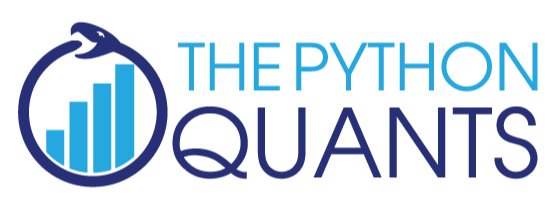|
# |
|
# NLP Helper Functions |
|
# |
|
# Artificial Intelligence in Finance |
|
# (c) Dr Yves J Hilpisch |
|
# The Python Quants GmbH |
|
# |
|
import re |
|
import nltk |
|
import string |
|
import pandas as pd |
|
from pylab import plt |
|
from wordcloud import WordCloud |
|
from nltk.corpus import stopwords |
|
from nltk.corpus import wordnet as wn |
|
from lxml.html.clean import Cleaner |
|
from sklearn.feature_extraction.text import TfidfVectorizer |
|
plt.style.use('seaborn') |
|
|
|
cleaner = Cleaner(style=True, links=True, allow_tags=[''], |
|
remove_unknown_tags=False) |
|
|
|
stop_words = stopwords.words('english') |
|
stop_words.extend(['new', 'old', 'pro', 'open', 'menu', 'close']) |
|
|
|
|
|
def remove_non_ascii(s): |
|
''' Removes all non-ascii characters. |
|
''' |
|
return ''.join(i for i in s if ord(i) < 128) |
|
|
|
def clean_up_html(t): |
|
t = cleaner.clean_html(t) |
|
t = re.sub('[\n\t\r]', ' ', t) |
|
t = re.sub(' +', ' ', t) |
|
t = re.sub('<.*?>', '', t) |
|
t = remove_non_ascii(t) |
|
return t |
|
|
|
def clean_up_text(t, numbers=False, punctuation=False): |
|
''' Cleans up a text, e.g. HTML document, |
|
from HTML tags and also cleans up the |
|
text body. |
|
''' |
|
try: |
|
t = clean_up_html(t) |
|
except: |
|
pass |
|
t = t.lower() |
|
t = re.sub(r"what's", "what is ", t) |
|
t = t.replace('(ap)', '') |
|
t = re.sub(r"\'ve", " have ", t) |
|
t = re.sub(r"can't", "cannot ", t) |
|
t = re.sub(r"n't", " not ", t) |
|
t = re.sub(r"i'm", "i am ", t) |
|
t = re.sub(r"\'s", "", t) |
|
t = re.sub(r"\'re", " are ", t) |
|
t = re.sub(r"\'d", " would ", t) |
|
t = re.sub(r"\'ll", " will ", t) |
|
t = re.sub(r'\s+', ' ', t) |
|
t = re.sub(r"\\", "", t) |
|
t = re.sub(r"\'", "", t) |
|
t = re.sub(r"\"", "", t) |
|
if numbers: |
|
t = re.sub('[^a-zA-Z ?!]+', '', t) |
|
if punctuation: |
|
t = re.sub(r'\W+', ' ', t) |
|
t = remove_non_ascii(t) |
|
t = t.strip() |
|
return t |
|
|
|
def nltk_lemma(word): |
|
''' If one exists, returns the lemma of a word. |
|
I.e. the base or dictionary version of it. |
|
''' |
|
lemma = wn.morphy(word) |
|
if lemma is None: |
|
return word |
|
else: |
|
return lemma |
|
|
|
def tokenize(text, min_char=3, lemma=True, stop=True, |
|
numbers=False): |
|
''' Tokenizes a text and implements some |
|
transformations. |
|
''' |
|
tokens = nltk.word_tokenize(text) |
|
tokens = [t for t in tokens if len(t) >= min_char] |
|
if numbers: |
|
tokens = [t for t in tokens if t[0].lower() |
|
in string.ascii_lowercase] |
|
if stop: |
|
tokens = [t for t in tokens if t not in stop_words] |
|
if lemma: |
|
tokens = [nltk_lemma(t) for t in tokens] |
|
return tokens |
|
|
|
def generate_word_cloud(text, no, name=None, show=True): |
|
''' Generates a word cloud bitmap given a |
|
text document (string). |
|
It uses the Term Frequency (TF) and |
|
Inverse Document Frequency (IDF) |
|
vectorization approach to derive the |
|
importance of a word -- represented |
|
by the size of the word in the word cloud. |
|
|
|
Parameters |
|
========== |
|
text: str |
|
text as the basis |
|
no: int |
|
number of words to be included |
|
name: str |
|
path to save the image |
|
show: bool |
|
whether to show the generated image or not |
|
''' |
|
tokens = tokenize(text) |
|
vec = TfidfVectorizer(min_df=2, |
|
analyzer='word', |
|
ngram_range=(1, 2), |
|
stop_words='english' |
|
) |
|
vec.fit_transform(tokens) |
|
wc = pd.DataFrame({'words': vec.get_feature_names(), |
|
'tfidf': vec.idf_}) |
|
words = ' '.join(wc.sort_values('tfidf', ascending=True)['words'].head(no)) |
|
wordcloud = WordCloud(max_font_size=110, |
|
background_color='white', |
|
width=1024, height=768, |
|
margin=10, max_words=150).generate(words) |
|
if show: |
|
plt.figure(figsize=(10, 10)) |
|
plt.imshow(wordcloud, interpolation='bilinear') |
|
plt.axis('off') |
|
plt.show() |
|
if name is not None: |
|
wordcloud.to_file(name) |
|
|
|
def generate_key_words(text, no): |
|
try: |
|
tokens = tokenize(text) |
|
vec = TfidfVectorizer(min_df=2, |
|
analyzer='word', |
|
ngram_range=(1, 2), |
|
stop_words='english' |
|
) |
|
|
|
vec.fit_transform(tokens) |
|
wc = pd.DataFrame({'words': vec.get_feature_names(), |
|
'tfidf': vec.idf_}) |
|
words = wc.sort_values('tfidf', ascending=False)['words'].values |
|
words = [a for a in words if not a.isnumeric()][:no] |
|
except: |
|
words = list() |
|
return words |
|
|
|
|
|
|

